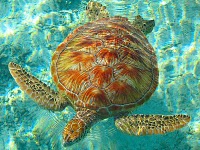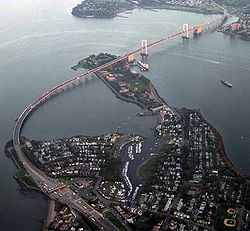To see the world in a grain of sand - movement from a turtle hatchling's perspective
 Wednesday, November 17, 2010 at 12:40PM
Wednesday, November 17, 2010 at 12:40PM (with apologies to William Blake). A grain of sand represents many things to a baby turtle. While still within the egg, sand represents a roof over your head, protection from the desiccating sun and from predators, and a blanket to keep you warm and level until its your turn to break free of the nest and do that mad nocturnal dash down the beach to the safety (yeah, right!) of the sea. From the moment of hatching, however, sand presents a range of obstacles to a baby turtle, and believe it or not, the way they overcome those obstacles tells scientists a lot about how things can and should move through and across granular substrates, and maybe offers a few solutions to human problems of this kind too. That’s because, while they look like little clockwork toys ceaselessly flapping their way to some unseen destination, they’re actually engaging in several different types of locomotion, and adapting them on the fly to best suit the substrate they happen to be on. Discovered by Nicole Mazouchova and Nick Gravish from Daniel Goldman’s biomechanics lab at Georgia Tech, these adaptations show us that baby turtles are much cleverer than perhaps we gave them credit for, and they may even explain to some degree why turtles nest on some beaches and not others.
Immediately after hatching a foot or more below the surface of the beach, a baby turtle must get to the surface to draw breath and begin its journey down to the water. That high up a beach, the sand is usually dry and loosely packed. Governed by the laws of physics, sand of this type can act either as a liquid or as a solid, depending on the force applied to it. (if you ever want to see what I mean, add a little water to some corn starch in the palm of your hand until its like whipping cream, and then rub the surface with your other finger. If you rub slowly, your finger will wet, but if you rub fast, the surface will appear dry and your finger will slide right across). To move across this kind of sand, the turtle reaches forward with its front flipper and places it flat on the sand, then digs the leading edge down until the flipper is perpendicular to the surface and mostly buried. By pushing back with just the right amount of force, the sand behind the flipper doesn’t yield, but solidifies like the corn starch in your hand, providing a solid point of leverage against which the turtle can gain traction and push further forward. It then repeats the process on the other side, lurching forward one push at a time with alternating strokes, rather like a rock climber makes progress up a wall. The key thing is that if the turtle pushes too hard or fast, the sand will fluidise and the flipper will pass through it like a liquid, producing no traction; they have to push just the right amount for the physics of the sand to work in their favour. Nick, Nicole and Dr. Goldman observed this in wild loggerhead hatchlings, then showed why this is mathematically, and then created robot turtles that recreated exactly the scenario in the lab to confirm their mathematical model (what, you mean you don’t have a robot turtle hatchling in your lab?). You might think that this kind of motion is pretty inefficient since you effectively stop after each push, but it works well for the hatchlings; they can move three body-lengths per second or more across the sandy surface. That’s the equivalent of a human running at a full sprint, and they’re doing it on dry sand. Good luck matching that effort!
Farther down the beach, the turtle meets a different kind of sand. Wetted and a sorted by the tide, this sand is flat and compacted and the hatchling would be unable to dig its flipper in, so it changes strategy. Instead of digging in and pushing against a block of solidified sand, it jams just the claw on the leading edge of its flipper into the surface like a spike and (with some help from the back flippers) pushes off it, rotating around the point as a pivot, to jam the next point in a little further ahead, just like a skier planting their stocks in the snow as the pivot point for turns.
Farther still, the turtle meets the water. At this critical point, the game changes completely. Instead of moving across a granular surface, the hatchling is now supported by a liquid medium that will never solidify or allow them to gain traction like thy did on the beach. That’s OK, though, because now the turtle gets the benefit of “inertial movement”. That is, it can build up momentum from repeated strokes, unlike on the sand, where as soon as you stop pushing, you stop moving. Movement through this sort of medium requires a totally different motion, so the turtle switches again, this time to the familiar symmetrical flapping that it will use for the rest of its life, creating lift and thrust with every stroke of the paired front flippers.
These biomechanical adaptations to different substrates may have a role to play in why turtles nest on some beaches and not others. That’s because not every sand behaves so predictably. Sands where all the grains are of similar size behave differently from those where the grains vary; and well sorted sands behave differently from poorly sorted sands. You know this is you’ve ever walked on a “squeaky” beach - those sounds come from the friction of sand grains all being the same size (try squeezing a bag of marbles and you’ll see what I mean). Taken together, these adaptations show a remarkable flexibility of locomotion for an animal just in its first hours of life. It must be working well for them, though, because the sea turtle lineage has been doing just fine on this planet for over 200 million years. To borrow from Blake once more:
Every night and every morn
Some to misery are born,
Every morn and every night
Some are born to sweet delight.
Mazouchova, N., Gravish, N., Savu, A., & Goldman, D. (2010). Utilization of granular solidification during terrestrial locomotion of hatchling sea turtles Biology Letters, 6 (3), 398-401 DOI: 10.1098/rsbl.2009.1041






